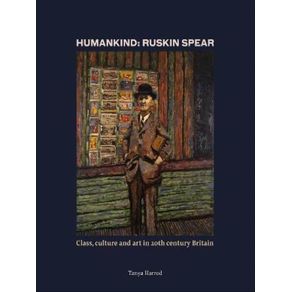Humankind: Ruskin Spear is the first book on the painter Ruskin Spear RA (1911-1990) since a brief monograph in 1985. It uses Spear’s career to unlock the coded standards of the 20th-century art world and to look at class and culture in Britain and at notions of ‘vulgarity’.
The book takes in popular press debates linked to the annual Royal Academy Summer Exhibition; the changing preferences of the institutionalized avant-garde from the Second World War onwards; the battles fought within colleges of art as a generation of post-war students challenged the skills and commitment of their tutors; and the changing status of figurative art in the post-war period. Spear was committed to a form of social realism but the art he produced for left-wing and pacifist exhibitions and causes had a sophistication, authenticity and humour that flowed from his responses to bravura painting across a broad historical swathe of European art, and from the fact that he was painting what he knew. Spear’s geography revolved around the working class culture of Hammersmith in West London and the spectacle of pub and street life. This was a metropolitan life little known to, and largely unrecorded by, his contemporaries.
Tracking Spear also illuminates the networks of friendship and power at the Royal College of Art, at the Royal Academy of Arts and within the post-war peace movement. As the tutor of the generation of Kitchen Sink and of future Pop artists at the Royal College of Art, and with friendships with figures as diverse as Sir Alfred Munnings and Francis Bacon, Spear’s interest in non-elite culture and marginal groups is of particular interest. Spear’s biting satirical pictures took as their subject matter political figures as diverse as Khrushchev and Enoch Powell, the art of Henry Moore and Reg Butler and, more generally, the structures of leisure and pleasure in 20th-century Britain.
Humankind: Ruskin Spear has an obvious interest for art historians, but it also functions as a s

